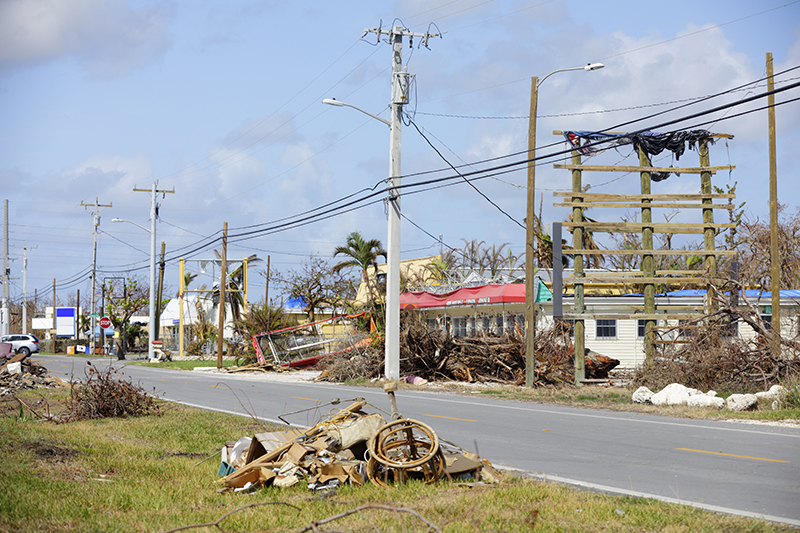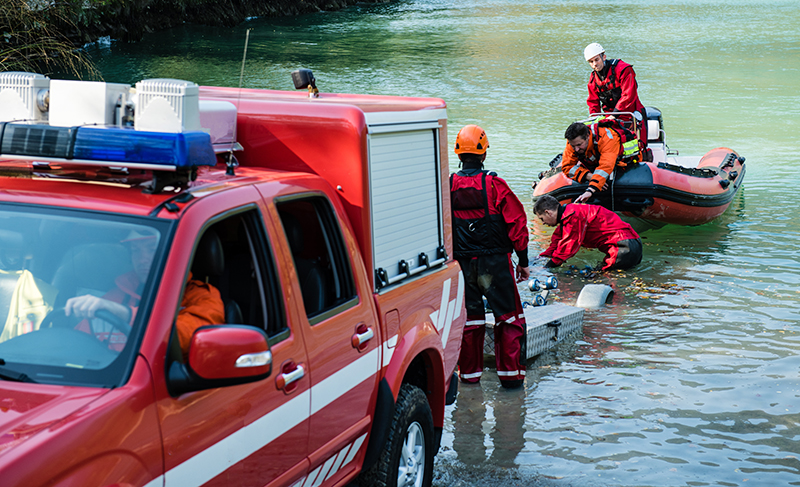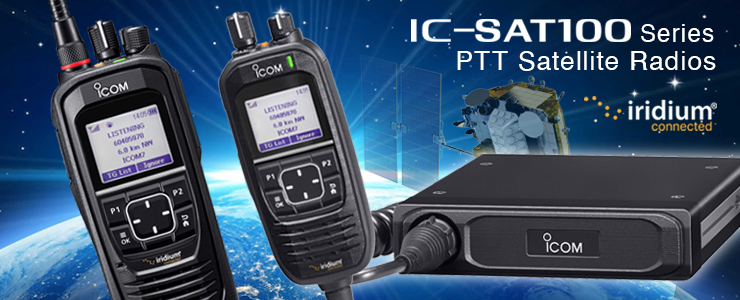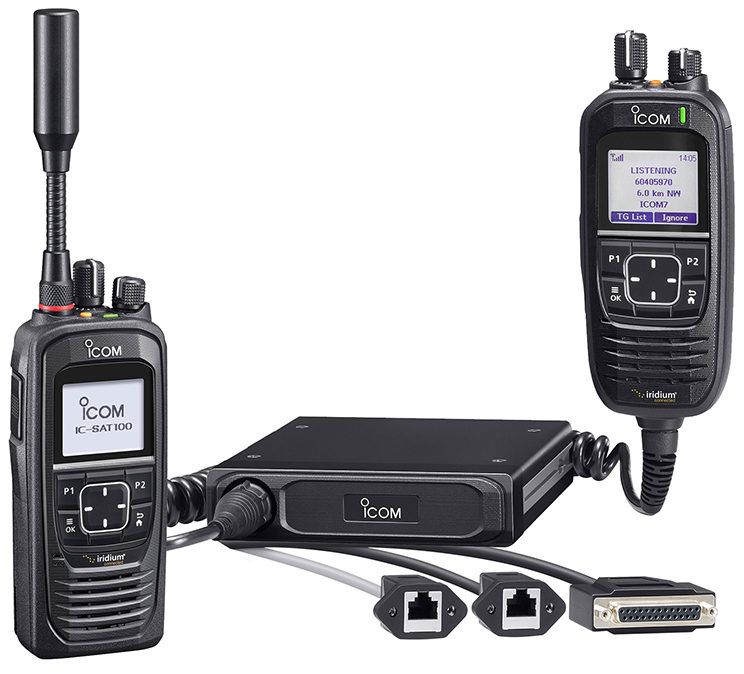
Hurricanes, tornadoes, fires, and floods are only some of what Mother Nature can bring us. When catastrophe strikes, it is crucial to have effective communications and the exchange of information during an emergency. With the potential of interrupted ground-based communications – downed phone lines and cellular/radio towers – how can first responders prepare?

With so much reliance on terrestrial forms of communication, our communications systems are vulnerable to natural disasters, which hinders sending and receiving information from organizations like FEMA, NOAA, IPAWS, and EAS, and state and local public safety/service organizations. Satellite communications provide instant connectivity for voice regardless of the status of surrounding terrestrial systems.
Satellite communication technology has come a long way in recent years. For a location that experiences intense weather situations, residents can easily have disconnected power, phone, internet lines, and concurrent service or signal disruption at land mobile radio towers. First responders need a backup plan in this case. More and more, disaster relief organizations look to diversify their technology with satellite to become more effective. To have another means of communication is to be prepared for a better chance of successful operations. With traditional means of communication down, one could quickly connect to a satellite that is safe from earthly disasters.
There are few limitations to satellite communications, and while the technology keeps improving, they still exist. Latency is caused by the delay in signal leaving the earth’s atmosphere, authenticating the packets, and then being repeated back to earth. Some carriers satellites line their satellites around the equator (geostationary). Other satellite communication companies, such as Iridium, use 66 low earth orbit (LEO) satellites that don’t experience as much of this delay, and they provide more coverage farther north and south of the equator.

While there is no single ‘perfect’ communication method that can support all first responder organizations, satellite comms can provide peace of mind. Already have an emergency system in place? Consider a satellite system to diversify your communications as a backup. Redundancy ensures preparedness for future catastrophes. Suppose phone lines or cell towers go down. In this instance, the only way to go is up. Connect to a network of satellites independent from the effects of the planet’s natural disasters. Modern devices, such as cell phones, tablets, and personal computers, can utilize several networking technologies: wireless, Bluetooth, or a carrier’s LTE network. If one channel goes down, someone isn’t entirely left in the dark. The value of having a backup system is incalculable. Satellite technology is the most reliable form of communicating during an emergency.
Satellite is also an excellent addition for those systems looking to facilitate a common operating picture in terms of interoperability. If multiple first responder teams work during an emergency, communicating between teams is necessary – for efficiency and safety. A satellite system can easily integrate into a current system with some extra pieces of equipment.
So, now the satellite system is in-play. How do you connect? Quickly and clearly communicate with your command center by expanding its reach. Using Icom’s VE-PG4 RoIP gateway, an organization can connect to traditional land mobile radios, SIP phones, WLAN and LTE radios, and other external devices. Easily connect fixed-to-fixed, mobile-to-mobile, fixed-to-mobile, and even remote locations all over the world.

Icom and Iridium Satellite Communications created the ideal two-way radios for ‘anywhere-comms’: the IC-SAT100 handheld and IC-SAT100M mobile satellite radios are the perfect safety net. Take the SAT100 anywhere in the world, and the SAT100M is the go-to device for fixed mount installations. It’s ready to be installed inside a building (or a vehicle) with its exterior antenna connected via ethernet, not coaxial, making routing more flexible.
The SAT100M conveniently connects back-to-back with an F5400D Series IDAS UHF/VHF mobile radio. This setup allows VHF radios on the ground to talk to someone in a vehicle with the signal repeated back via satellite to any contact in the world.

During a mission-critical situation in a disaster area, you want to get your calls through to the team. Easily keep SAT100 units charged and ready in multiple ways. With the BC-241 desktop charger, charge via a multi-plug AC adapter or plug in the BC-242 AC adapter.
Why choose Icom? Icom produces innovative electronics for worldwide consumers, businesses, government agencies, and more. Be prepared – Air. Land. Sea.

